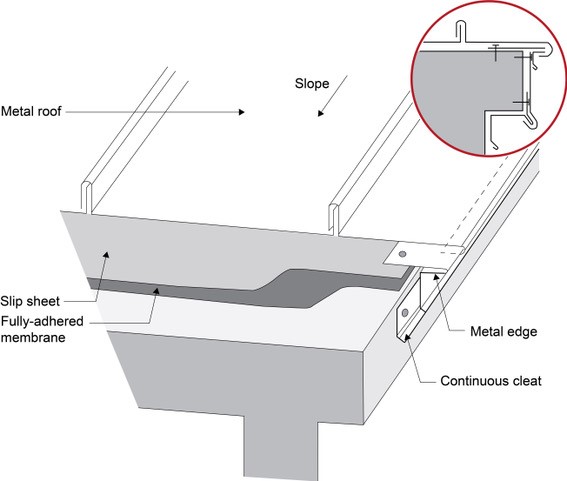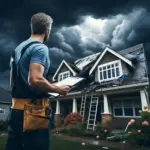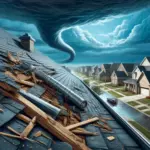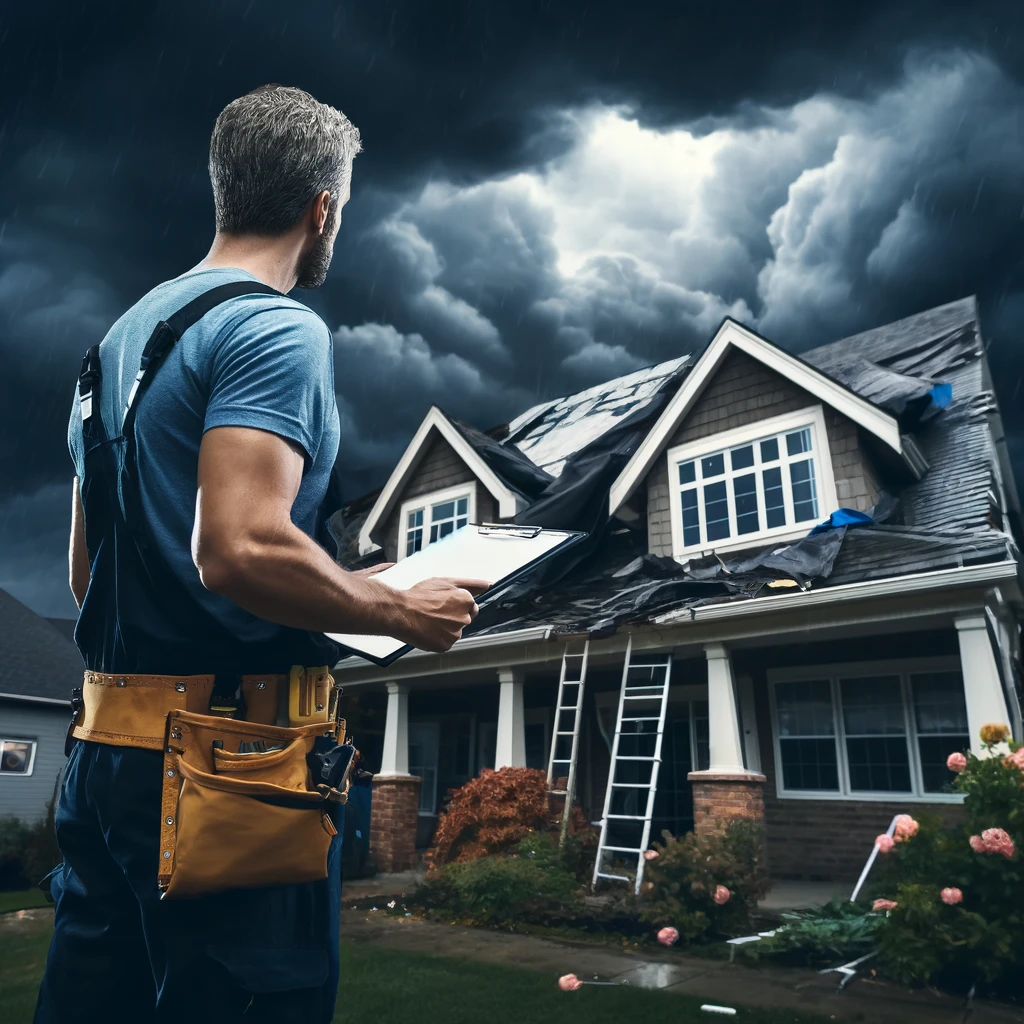Metal roofing is a resilient choice for homes, but when it comes to coastal high-wind areas, proper installation and compliance are crucial. This guide focuses on key steps to enhance your metal roofing installation to minimize the risk of damage from wind, water intrusion, hail, seismic activity, wildfires, and severe winter weather.
Metal Roof Installation Key Steps
- Enhance Roof Deck Attachment and Framing: Before installation, ensure your roof deck attachment and framing meet the required standards, especially during roof replacement.
- Seal the Roof Deck: Choose one of the following options for sealing the roof deck based on IBHS Fortified Hurricane and High Wind Standards:
- Install a self-adhered (peel and stick) membrane over the entire roof deck (recommended with a #15 felt bond break between membrane and shingles).
- Apply a nominal 4-inch wide roof deck flashing tape over all roof sheathing panel seams and cover it with #30 felt or equivalent synthetic underlayment.
- Opt for a two-layer #30 felt underlayment system (recommended best practice).
- Install Drip Edges: Properly install drip edges at eaves and rakes to prevent water infiltration.
- Choose Uplift-Resistant Roofing Products: Select metal roof panels and other roofing products that provide uplift resistance equal to or greater than the design uplift pressure for the roof based on your site’s wind speed and exposure category.
- Follow Manufacturer’s Instructions: Ensure that you install your metal roofing in accordance with the manufacturer’s installation instructions, all applicable building codes, and selected best practices.
- Flashing at Penetrations and Intersections: Properly integrate flashing at roof penetrations and wall intersections, ensuring a watertight seal.
Description
Metal roofing is a durable choice, but in coastal high-wind areas, it’s crucial to protect your home from storm damage. Impact-resistant roofing options are available to guard against windborne debris and hail. Building codes mandate that roofing be rated for local wind zones, especially in hurricane-prone regions.
Metal Roofing Types
- Metal Shingles: Resemble wood shakes or concrete/clay tiles.
- Metal Panels: Include “exposed fastener” and “standing seam” panels. Standing seam panels are highly wind-resistant and require sheathing.
Metal Roofing Material Options
- Common materials for metal roofing include steel, aluminum, and copper. These materials are naturally corrosion-resistant or made so during manufacturing.

Installation Guidance
- Manufacturers provide detailed information on product materials, installation requirements, fire classification, wind uplift resistance, and impact rating in their Evaluation Service Reports (ESR).
IBHS Fortified Home Standards
- The IBHS Fortified Home program offers guidance and standards for building in disaster-prone areas, including high-wind zones.
Climate Considerations
- In hurricane and high-wind areas, it’s essential to choose high-wind and impact-rated metal roofing to protect against storm damage.
Cold Climate and High Snow Load Regions
- In cold climates, provide adequate roof venting to prevent condensation.
- High-snow-load regions should design roofs with proper slopes and consider snow guards.
Retrofit for Metal Roof Replacement
- Remove Existing Roofing: Start by removing all existing roofing materials, including claddings and underlayment. Ensure a clean and smooth surface for the new roofing installation.
- Inspect and Replace Wood Sheathing: Carefully inspect the wood sheathing for any signs of rot or damage. Replace any sections of wood sheathing that are rotten or compromised to ensure a solid foundation for the new roof.
- Flashings Inspection: Thoroughly inspect all flashings on the roof. Replace any damaged or missing flashings. If flashing is missing, inspect and replace any damaged sheathing and framing where necessary to maintain the structural integrity of the roof.
- Roof Deck Attachment Fasteners: Check the roof deck attachment fasteners to ensure they meet current requirements for nail type, size, and spacing. Re-nail or replace fasteners as needed to comply with current standards.
Installing Metal Roofing for an Existing Roof
- Assess Roof Decking: Before installing metal roofing, assess the condition of the roof decking. Address any areas that may show signs of rot or wear. Ensure that the underlayment, eave protection, and drip edges are securely and correctly installed.
- Follow Manufacturer’s Instructions: Install the metal panels or shingles according to the manufacturer’s instructions. These instructions are crucial for ensuring a proper and secure installation. Pay close attention to details such as fastening methods and spacing.
- Flashings Integration: When installing metal roofing, be sure to integrate flashings at roof-wall intersections and around roof penetrations. Proper flashing installation is essential to prevent leaks and maintain the waterproof integrity of the roof.
- Sealant Application: Apply sealant between the metal roof and the drip edge. This sealant helps to create a watertight barrier and prevents water infiltration at the roof’s edges.
Compliance with Codes and Standards
It’s crucial for any roofing project to adhere to building codes to ensure safety and structural integrity. In the insurance restoration industry, particularly in the Illinois, Wisconsin, and Indiana areas, compliance with various building codes is of utmost importance. Here are some key points regarding compliance with building codes:
- International Residential Code (IRC):
- 2009, 2012, 2015, 2018, and 2021 IRC
- Section R301: Design Criteria for safe load support
- Section R302: Fire Resistant Construction
- Chapter 9: Requirements for roof assemblies
- Section R902: Roof Classification (fire classifications)
- Section R905: Requirements for Roof Coverings
- Section R905.1: Underlayments based on wind design
- Section R905.4: Installation of metal roof shingles
- Section R905.10: Installation of metal roof panels
- Section R905.1.2: Ice barrier requirements for specific areas
- Section R905.7.1.1: Solid sheathing requirement in cold areas
- Section R908.3: Roof replacement guidelines
- International Wildland-Urban Interface Code (IWUIC):
- Section 504: This section addresses Class 1 Ignition-Resistant Construction for roofs and specifies the requirements for roof assemblies to achieve a Class A fire rating.
- Section 505: Covers Class 2 Ignition-Resistant Construction for roofs, requiring a Class A rating when tested in accordance with ASTM E108 or UL 790.
- Section 506: For Class 3 Ignition-Resistant Construction, it mandates a Class B rating when tested in accordance with ASTM E108 or UL 790.
- IBHS Fortified Home High Wind Standards:
- These standards outline specific requirements for metal panel roofing systems, including attachment, uplift resistance, and wind speed considerations. It’s important to follow the manufacturer’s instructions for proper installation.
- Fortified Home Hurricane Standard:
- Similar to IBHS High Wind Standards, this standard emphasizes the importance of proper installation of metal panel roofing systems to meet design uplift pressures and provide resistance against hurricanes.
- NFPA 1144 Standard:
- This standard mandates the use of roof coverings tested and rated as Class A in accordance with ASTM E108 or UL 790. It also requires eaves to be enclosed with fire-retardant or ignition-resistant materials and the installation of metal drip edges at rake and eave edges.
Proper installation and compliance with these guidelines and codes are essential to ensure the longevity and resilience of your metal roofing system in coastal high-wind areas.
For immediate service or consultation, you may contact us at Allied Emergency Services, INC.
Contact Information:
- Phone: 1-800-792-0212
- Email: Info@AlliedEmergencyServices.com
- Location: Serving Illinois, Wisconsin, and Indiana with a focus on the greater Chicago area.
If you require immediate assistance or have specific questions, our human support is readily available to help you.
Disclaimer: This article is intended for informational purposes only. For professional advice, consult experts in the field.










